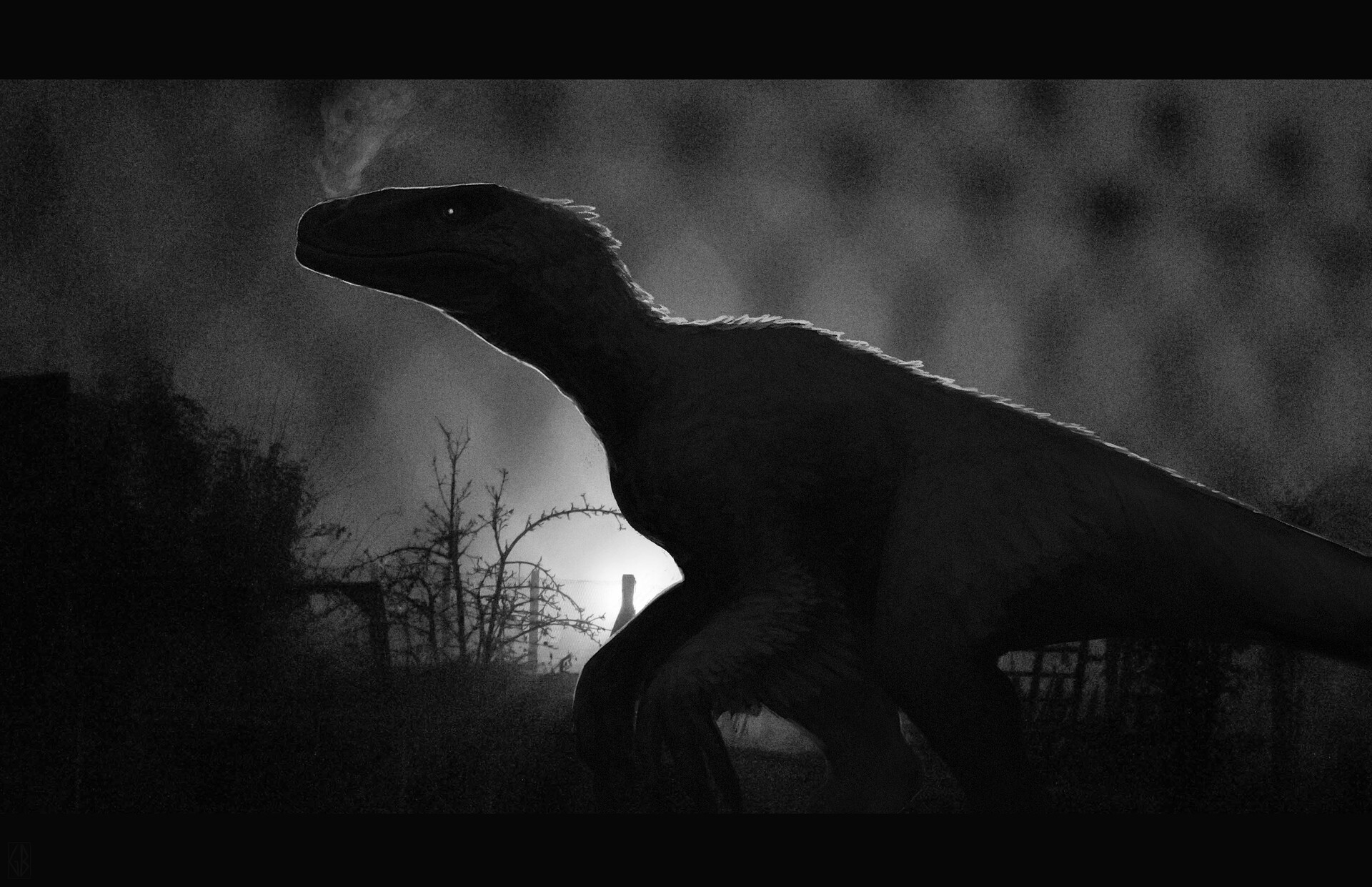

In 2030, paleontologist Jace Lewis unveiled the end result of his pet project: the Poultrysaurus. Decades of work reactivating dormant genes in the genetic code of a modern chicken had resulted in the creation of a bird with the teeth and claws of its dinosaur ancestors. Though they were unsuccessful in their endeavor to create an animal with a proper tail, Lewis was finally able to say, "I told you so."
Controvery quickly erupted around the creature, namely the ethics of tampering with an animal's DNA simply because it was possible. However, a certain party approached Lewis and the laboratories involved in the project, paid them a handsome fee for the research data, and even hired some of the geneticists involved with the project. This party, a biotechnology and pharmaceutical company known as the Udenberg Corporation, continued work on the project for other applications. By 2045, the Udenberg Corporation had transformed the Poultrysaurus into a creature for use by military and police agencies known simply as "Raptors".
Superior in almost every way to canines in terms of strength, speed, and senses, many governments and private military companies began training raptors for use in combat zones. The generations of raptors following the first corrected "defects" from previous generations, both physical and behavioral.
By 2060, Udenberg had expanded their market to include breeds tailor-made for civilian ownership. In order to control the population of raptors, each and every individual is rendered sterile through multiple redundant processes, short of actually neutering the animal. With these procedures in place, the Udenberg Corporation was confident that, if any individuals escaped into the wild, they would be incapable of reproducing.
And yet, by 2070, people all over the world were reporting packs of feral raptors, including offspring and nests. Governments demanded an explanation, and one was given: raptors were genetic chimeras, incorporating the DNA of multiple--sometimes dozens-- of different species. All species seen in the wild had one thing in common: they all had certain genes from the axolotl, a species of amphibian known for its remarkable regenerative abilities. Despite the redundant sterilization process, the raptors' reproductive organs had become healthy and fully functional again.
In an attempt to cull the population, bounties were issued on all feral raptors. In the end this was easier said than done. Most species were too fast and cunning for the average hunter, while others, namely breeds created specifically for military and police work, were resistant to weapons unless hit in vital areas. Pressure quickly began mounting on the Udenberg Corporation to find a solution. Multiple propositions were presented and rejected before Udenberg settled on one.
Led by geneticist Henry King, several teams worked in tandem to produce a breed of raptor specifically to hunt and kill other raptors. At first, the project was working. The new breed, dubbed "Tyrant", was tracking down and assisting in the kill or capture of feral raptor packs. King never fully disclosed the modifications to the Tyrant breed's genome, but governments didn't care, so long as they thinned out the population of wild raptors.
Without warning in 2077, hundreds of thousands of raptors--domestic and feral alike-- began attacking population centers en masse. Kind and loving pets turned on their owners with the ferocity of any wild beast. What was even more frightening was that these animals acted with brutal, almost military efficiency; indeed, raptor handlers from different militaries found the behavior eerily similar to how they would command raptors during operations. Small towns were wiped out in less than a day. Cities fell in several weeks. Police and military forces were swiftly overwhelmed.
The year is now 2080. There are only a few million humans left on the planet. Raptors have now established themselves as the dominant predator on almost every continent. Survivors have learned that the best way to survive is to keep on the move, and live in small groups. Rumors persist of places where raptors can't get to, or even refuse to go. Many insist that the world's influential and wealthy escaped to ships and remain in the middle of the ocean.
But unfortunately, rumors are the least of your worries.
Rumors don't have teeth.
Rumors don't have claws.
And rumors certainly aren't going to eat you alive.

The RP will follow a small group of survivors as they travel. On top of dealing with the raptors, they will have to deal with other humans, and maybe some drama in the group will occur. Rules will be added, as well as character sheets and a small bestiary of the species encountered. Please feel free to ask questions.
3x Like







